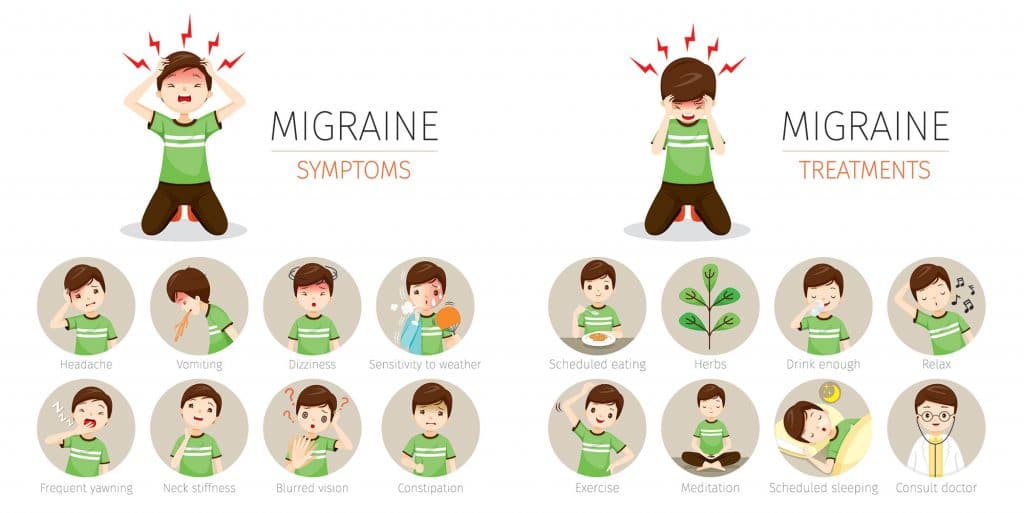Did you know that this week is Migraine Awareness Week? Despite how common an issue migraines are, affecting over 36 million Americans, there is still a concerning lack of information and support on this issue. So to help improve the lives of all those who live with migraines, we’re sharing key information about migraines and the importance of Migraine Awareness Week.
But first, let’s start with some background on what migraines are and how they affect people!
What Are Migraines?
There is a popular misconception that a migraine is just an intense headache, but that is not accurate. The truth is that, while migraines can feel like painful headaches, they often come with other, more specific symptoms. These migraine symptoms include:
- A headache that is localized to one side of the head
- Pulsing, throbbing pain
- Nausea and vomiting
- Dizziness
- Light and sound sensitivity
Depending on the person, migraines can vary in severity from uncomfortable to debilitatingly painful. And as much as we’d love to share the causes of migraines during this Migraine Awareness Week, there isn’t really a clear answer.
Migraine Causes
Nobody knows exactly what causes migraines, although there is speculation about it being affected by serotonin levels. However, while nobody knows what causes it, there are known triggers for migraines.
These triggers are different from causes because they only trigger migraines in someone who is already predisposed to suffer from migraines. This does not mean that doing these activities will definitely trigger a migraine, but it may increase your immediate risk of experiencing one.
Common migraine triggers include:
- Hormonal changes
- Drinking
- Stress
- Bright, flashing lights
- Strong smells, like perfume
- Intense physical activity, like working out
- Weather changes, especially shifts in barometric pressure
- Salty, processed foods
Just like there is no singular cause of a migraine, there are also many different ways that migraines can appear in different people.
Types of Migraines
While some types of migraines are more common than others, there is a wide variety in the ways that migraines manifest in individuals. The most common types of migraines are:
- Migraine with aura: A migraine with aura appears with typical migraine symptoms like headache and light sensitivity, but with an additional symptom called “aura.” Aura includes many visual symptoms, like blurred vision or even losing your vision for up to 30 minutes. This can also include tingling in the limbs and even loss of other senses like smell, taste, and touch.
- Migraine with brainstem aura: This includes the normal aura symptoms and migraine symptoms, as well as at least two of the following issues: tinnitus, vertigo, sound sensitivity, distorted speech, and loss of balance.
- Chronic migraine: Migraines are considered chronic when a person has a headache for 15 days or more in a three-month period, and when they also present with at least eight other migraine symptoms. Chronic migraines affect between three and five percent of the American population.
- Hemiplegic migraine: The aura symptoms of this migraine cause temporary weakness in one side of the body. This can feel similar to a stroke, but it has not been shown to cause any nerve damage.
- Migraine without headache: Also called a silent migraine, this type of migraine presents with no headache symptoms. However, it still comes with aura symptoms. These are typically shorter migraines, lasting only 20-30 minutes.
As you can see, there are many types of migraines, which makes diagnosing them particularly difficult. As a result, it can be hard for people to get the migraine care that they need.
What to Know for Migraine Awareness Week


The goal of Migraine Awareness Week is to improve the lives of people living with migraines by spreading information. This is clearly necessary, since almost a quarter of people who experience migraines deal with them for two years or more before getting help. That means two years of sometimes severe migraine symptoms with nothing but over-the-counter medications to help.
By spreading more information about migraines, there are two hopes. First, that people will recognize their mystery symptoms and subsequently be able to seek out healthcare that can help manage their migraine symptoms.
And second, that general practitioners and family doctors will feel more empowered to accurately diagnose those with migraines. Right now, many people can only be diagnosed with migraines if they see migraine specialists. Not only are these specialists not always available nearby, but they can also have long waiting lists and high fees, especially for the uninsured.
If you’ve made it this far, then your Migraine Awareness Week is off to a great start! The more people who know about migraines, the better. You can keep it up by sharing this article, starting a conversation with your friends, or even just evaluating yourself to see if you’ve been experiencing migraine symptoms. Migraines can feel overwhelming, but if you’re living with undiagnosed migraines, then you deserve healthcare to help manage them.
What Are You Doing for Migraine Awareness Week?
Tell us your plans in the comments below.
What topics would you like to see us explore next?
Email us at info@painresource.com with your ideas!
Are you on Facebook?





